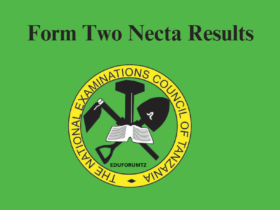Mastery-based grading is an innovative approach to grading that is gaining popularity in the education sector. The traditional grading system often focuses on the number of assignments completed, rather than the quality of work produced. In contrast, mastery-based grading emphasizes the mastery of skills and knowledge, rather than the accumulation of points. This approach allows students to focus on learning and understanding concepts, rather than just getting a good grade.
One of the defining traits of mastery-based grading is providing students with clear learning objectives for course content. Students are given access to a list of learning targets and what skills are necessary to meet those targets. This approach allows students to take ownership of their learning and focus on the specific skills they need to master. Additionally, mastery-based grading allows students multiple ways to demonstrate mastery of each learning objective. This can include assessments that are aligned to the learning objectives or other projects that allow students to showcase their understanding of the material.
Mastery-based grading is more effective than traditional grading methods in promoting deeper learning, student engagement, and academic success. This approach to grading is gaining momentum in schools and universities across the country, and many educators are embracing it as a more effective way to assess student learning.
Fundamentals of Mastery-Based Grading
Mastery-Based Grading is an approach to grading that focuses on students’ mastery of specific learning objectives or standards. This grading system is gaining popularity in educational institutions across the world as it provides a more accurate and comprehensive evaluation of student’s learning progress. In this section, we will explore the fundamentals of Mastery-Based Grading.
Learning Objectives
The first fundamental of Mastery-Based Grading is the clear identification of learning objectives. Teachers must define a clear list of learning targets, objectives, or standards that students are expected to master during the course. These objectives should be specific, measurable, and achievable, and should cover all the essential skills and knowledge that students need to acquire in the course.
Mastery Assessment
The second fundamental of Mastery-Based Grading is the assessment of mastery instead of points or partial credit. In this grading system, students are given access to a list of learning targets and what skills are necessary in order to meet those targets. They are then assessed on their mastery of those skills. Mastery assessments can take many forms, including tests, quizzes, essays, projects, and presentations.
Defining Mastery
The third fundamental of Mastery-Based Grading is defining mastery. Teachers must define what it means for a student to achieve mastery of a particular learning objective. This definition should be clear, objective, and measurable. It should also be communicated to students, so they know what they need to do to achieve mastery.
Flexibility
The fourth fundamental of Mastery-Based Grading is incorporating flexibility. Teachers must incorporate flexibility into their grading protocols to allow for individual differences in learning speed and style. This flexibility can take many forms, including allowing students to retake assessments, providing additional resources or support, or offering alternative assignments.
Mastery-Based Grading is a powerful tool for evaluating student learning progress accurately. By focusing on specific learning objectives, assessing mastery, defining mastery, and incorporating flexibility, teachers can create a more equitable, comprehensive, and effective grading system.
Benefits of Mastery-Based Grading
Mastery-based grading is a system that focuses on tracking the learning progress of students. It allows learners to see where they fall short in the curriculum, which enables them to recognize the importance of doing well academically. Here are some of the benefits of mastery-based grading:
1. Encourages a Growth Mindset
Mastery-based grading encourages a growth mindset in students. Instead of focusing on grades, students are encouraged to focus on their learning progress. This helps them to develop a positive attitude towards learning and encourages them to take risks and try new things.
2. Provides Immediate Feedback
Mastery-based grading provides immediate feedback to students. This allows them to identify areas where they need to improve and make the necessary changes to their learning approach. This helps students to become more self-aware and to take responsibility for their own learning.
3. Promotes Equity
Mastery-based grading promotes equity in education. Students are not penalized for their mistakes, but rather encouraged to learn from them. This helps to level the playing field for students who may have struggled with traditional grading systems, allowing them to succeed and achieve their full potential.
4. Encourages Mastery of Skills
Mastery-based grading encourages students to master the skills necessary for success in their academic and professional lives. By focusing on learning progress, students are encouraged to continue working on areas where they may be struggling until they achieve mastery.
5. Provides Clear Learning Targets
Mastery-based grading provides clear learning targets for students. This helps them to understand what is expected of them and what skills they need to develop in order to meet those expectations. This clarity helps students to stay focused and motivated, making it easier for them to achieve their goals.
In conclusion, mastery-based grading has numerous benefits for students. It encourages a growth mindset, provides immediate feedback, promotes equity, encourages mastery of skills, and provides clear learning targets.
Challenges in Mastery-Based Grading
Mastery-based grading is a teaching approach that allows students to progress at their own pace and demonstrate their mastery of a subject. While it has several benefits, it also comes with various challenges that educators need to address.
Transitioning Difficulties
One of the primary challenges of mastery-based grading is the transition from a traditional grading system. Students who are used to receiving letter grades may find it difficult to adjust to a system that assesses their mastery of a subject. Teachers may also find it challenging to develop a comprehensive system that accounts for every student’s pace of learning.
Assessment Concerns
Another challenge is creating assessments that accurately measure a student’s mastery of a subject. Teachers must develop a range of assessments that cater to different learning styles and provide feedback to students that is both meaningful and actionable. They must also ensure that assessments are aligned with the learning objectives of the course.
Implementation Hurdles
Implementing mastery-based grading can also be a logistical challenge for schools. It requires a significant investment of time and resources to develop a system that is fair, accurate, and consistent. Additionally, schools must ensure that their grading system is compatible with their existing technology infrastructure.
Despite these challenges, mastery-based grading has several benefits, including increased student engagement and improved learning outcomes. By addressing these challenges, educators can create a grading system that promotes student success and encourages lifelong learning.
Mastery-Based Grading in Various Educational Levels
Mastery-based grading is an approach to grading that focuses on learners mastering concepts rather than achieving set grades. It is gaining popularity in various educational levels as it allows teachers to identify areas where learners lag and need assistance. Here are some examples of how mastery-based grading is used in different educational levels.
Elementary Education
In elementary education, mastery-based grading is often used to assess students’ understanding of basic concepts, such as reading, writing, and arithmetic. Teachers use a variety of methods to assess mastery, including quizzes, tests, and projects. The goal is to ensure that students have a strong foundation in these core subjects before moving on to more advanced topics.
One common way of implementing mastery-based grading in elementary education is through a standards-based grading system. This system assesses students’ mastery of specific learning standards, rather than their performance on individual assignments or tests. Students are given multiple opportunities to demonstrate their understanding of each standard until they achieve mastery.
Secondary Education
In secondary education, mastery-based grading is often used to assess students’ understanding of more complex concepts, such as science, history, and literature. Teachers use a variety of methods to assess mastery, including essays, research projects, and presentations. The goal is to ensure that students have a deep understanding of these subjects before moving on to college or the workforce.
One common way of implementing mastery-based grading in secondary education is through a competency-based grading system. This system assesses students’ mastery of specific competencies, such as critical thinking, problem-solving, and communication. Students are given multiple opportunities to demonstrate their mastery of each competency until they achieve proficiency.
Higher Education
In higher education, mastery-based grading is often used to assess students’ understanding of complex and specialized subjects, such as engineering, medicine, and law. Teachers use a variety of methods to assess mastery, including exams, research papers, and internships. The goal is to ensure that students have a deep understanding of their chosen field before entering the workforce.
One common way of implementing mastery-based grading in higher education is through a mastery-based grading system. This system assesses students’ mastery of specific learning objectives, such as research skills, analytical skills, and practical skills. Students are given multiple opportunities to demonstrate their mastery of each learning objective until they achieve mastery.
In conclusion, mastery-based grading is gaining popularity in various educational levels as it allows teachers to identify areas where learners lag and need assistance. It is implemented in different ways in different levels of education, but the goal is always the same: to ensure that students have a deep understanding of the subject matter before moving on to more advanced topics.
Case Studies of Mastery-Based Grading
Mastery-based grading has been implemented in various educational institutions, and the results have been promising. Here are some case studies that showcase the effectiveness of mastery-based grading:
- Dordt University: In 2019, Dordt University implemented mastery-based grading in their Discrete Structures course. The course previously had a traditional grading system, but the faculty wanted to focus on student learning rather than grades. With mastery-based grading, students were required to demonstrate mastery of each learning target before moving on to the next one. The faculty found that students were more engaged and motivated, and the course had higher retention rates compared to previous years.
- California State University: In 2020, California State University introduced mastery-based grading in their professional development program. The program previously used a points-based grading system, but the faculty wanted to shift the focus to mastery of skills and knowledge. With mastery-based grading, students were given a clear list of learning targets and were assessed based on their mastery of those targets. The faculty found that students were more focused on learning and had a deeper understanding of the material.
- Lindsay Unified School District: The Lindsay Unified School District in California has been using mastery-based grading since 2009. The district implemented the system to address the achievement gap between low-income and high-income students. With mastery-based grading, students are given a clear list of learning targets and are assessed based on their mastery of those targets. The district found that students were more motivated and engaged, and the achievement gap decreased significantly.
These case studies demonstrate that mastery-based grading can be effective in improving student learning and engagement. By focusing on mastery of skills and knowledge rather than grades, students are more motivated to learn and have a deeper understanding of the material.
Future of Mastery-Based Grading
Mastery-based grading has been gaining popularity in recent years as educators recognize the limitations of traditional grading systems. While it has its critics, many experts believe that mastery-based grading is the future of education. Here are some potential developments that could shape the future of mastery-based grading:
Increased Adoption
As more schools and districts adopt mastery-based grading, it is likely that it will become the norm rather than the exception. This will require a shift in mindset for both educators and students, as they learn to focus on mastery of skills and knowledge rather than simply earning a passing grade. However, as more research is conducted on the benefits of mastery-based grading, it is likely that more schools and districts will make the switch.
Integration of Technology
Technology has already had a significant impact on education, and this is likely to continue in the future. Mastery-based grading could be integrated with digital tools and platforms to make it easier for educators to track student progress and provide feedback. For example, digital portfolios could be used to track student mastery of specific skills, and automated grading systems could be used to provide instant feedback on assessments.
Personalized Learning
Mastery-based grading is well-suited to personalized learning, as it allows students to progress at their own pace and focus on the skills and knowledge that are most relevant to their goals. As personalized learning becomes more widespread, mastery-based grading is likely to become even more important. This could include the use of adaptive learning technologies that adjust the difficulty of assignments based on student performance, as well as the use of data analytics to identify areas where students need additional support.
Greater Focus on Soft Skills
Mastery-based grading has traditionally focused on academic skills and knowledge, but there is a growing recognition that soft skills such as communication, collaboration, and critical thinking are also important for success in the 21st century. In the future, mastery-based grading could be expanded to include these skills, allowing students to demonstrate mastery in a broader range of areas. This could include the use of rubrics and other assessment tools to evaluate soft skills, as well as the integration of experiential learning opportunities into the curriculum.
Overall, the future of mastery-based grading looks bright. While there are still challenges to be overcome, such as resistance from educators and students who are used to traditional grading systems, the benefits of mastery-based grading are becoming increasingly clear. As more schools and districts adopt this approach, it is likely that we will see significant improvements in student learning and achievement.
Frequently Asked Questions
What are the benefits of using a mastery-based grading system?
Using a mastery-based grading system allows students to progress at their own pace and ensures that they have a solid understanding of the material before moving on. This approach helps to promote a growth mindset and encourages students to take ownership of their learning. Additionally, it can reduce stress and anxiety for students who may struggle with traditional grading systems.
How does mastery-based grading differ from standards-based grading?
While both approaches focus on student mastery, mastery-based grading places a greater emphasis on students demonstrating a deep understanding of the material before moving on. Standards-based grading tends to focus more on meeting specific learning objectives or standards, which may not necessarily require the same level of mastery.
What is the best way to implement a mastery-based grading system?
The best way to implement a mastery-based grading system is to start by clearly defining learning objectives and mastery criteria. Teachers should then provide students with frequent opportunities to demonstrate their understanding of the material and adjust instruction as needed. Additionally, it is important to communicate with parents and students about the new grading system to ensure that everyone is on the same page.
How is mastery grading calculated?
Mastery grading is typically calculated based on a student’s ability to demonstrate mastery of specific learning objectives. This may involve completing assessments or assignments that are designed to measure a student’s understanding of the material. Mastery grading may also take into account factors such as effort and participation.
What is a mastery-based approach to grading?
A mastery-based approach to grading involves focusing on a student’s ability to demonstrate mastery of specific learning objectives. This approach places less emphasis on grades and more emphasis on student learning and growth. Mastery-based grading systems typically involve providing students with frequent opportunities to demonstrate their understanding of the material and adjusting instruction as needed.
How does a mastery grade book differ from a typical grade book?
A mastery grade differs from a typical grade in that it focuses on a student’s mastery of specific learning objectives rather than overall grades. Mastery grade books typically include information about which learning objectives a student has mastered and which ones they still need to work on. This approach allows teachers to provide targeted feedback and adjust instruction as needed to help students achieve mastery of the material.
Also Read:-
- Vyuo Bora Tanzania: Top Universities for Quality Education in Tanzania 2023-2024
- Information Technology Courses University Entry Requirements in Tanzania 2023
- List of Tanzanian Universities Offering BSc MRHIM in Medical Records and Health Information Management
- MUST University Pharmacy Program Fee Structure 2023/2024
- Top Colleges and Universities in Dar es Salaam for 2023/2024






Leave a Reply